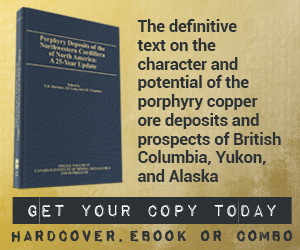Library Magazine Articles The evolution of standards: CIM tools fuel discussion
The evolution of standards: CIM tools fuel discussion
Deborah McCombe - Aug 2010
International standards for the reporting of mineral resources, mineral reserves and exploration results have been developing at a rapid pace for the past 20 years due to the globalization of the mining industry. Standards for the valuation of mineral properties have followed a similar course.
In May 2010, CIM released the revised version of Special Volume 56, a compendium of the current Canadian and international reporting standards for mineral resources and reserves, Canadian stock exchange reporting requirements for the mining industry, CIM best practice guidelines and papers describing industry practices in the area of mineral resource and reserve estimation. Canadian valuation standards and relevant papers describing valuation best practice form the second portion of the volume. Used to its full potential, this volume and other useful tools can potentially serve as catalysts for the evolution of standards guidelines.
Canadian standards
In the wake of several mining scandals that occurred in the 1990s, the Ontario Securities Commission and the Toronto Stock Exchange jointly formed the Mining Standards Task Force (MSTF), which prepared recommendations for improving the standards of practice and disclosure in the industry. These recommendations focused on four key changes:
- formulating the concept of the “Qualified Person”
- establishing industry standards and best practice guidelines
- adopting CIM mineral resources and reserve definitions
- establishing national regulations and improving regulatory oversight
The Canadian Securities Administrators (CSA) incorporated many of the MSTF recommendations in a Canadian securities law — National Instrument 43-101 Standards of Disclosure for Mineral Projects — which came into effect in 2001, was amended in 2005 and is currently in the process of being updated. CIM took a leading industry role by developing the CIM Definition Standards on Mineral Resources and Mineral Reserves adopted in 2000, amended in 2005 and incorporated by reference into NI 43-101. This resulted in the inclusion of several CIM best practice guidelines as guidance in the Companion Policy of NI 43-101 including: Exploration Best Practice Guidelines (2000); Guidelines for the Reporting of Diamond Exploration Results (2003); Estimation of Mineral Resources and Mineral Reserves Best Practice Guidelines (2003); and Best Practice Guidelines for Rock Hosted Diamond Estimation (2008). Additionally, in March 2003, the Standards and Guidelines for Valuation of Mineral Properties was approved by CIM Council.
In developing the Canadian industry standards, the excellent achievements and experiences of the national reporting organizations in Australia, South Africa, the United States and the United Kingdom as well provided valuable guidance. In many cases, their standards provided models to be followed, albeit with a Canadian flavour, reflecting our unique governance structures.
International standards
In 2006, a major milestone in international reporting standards was reached when the Committee for Mineral Reserves International Reporting Standards (CRIRSCO) published its International Reporting Template for Exploration Results, Mineral Resources and Mineral Reserves (template). CRIRSCO currently represents national reporting organizations in Australia, Canada, Chile, South Africa, the United States, the United Kingdom and Western Europe. The template provides a basic, non-binding model for countries that do not have a national standard or that want to modify their existing systems to make them internationally compatible.
With the emergence of countries such as Russia and China as major producers and consumers of minerals, it will be beneficial for their mineral reporting standards to be harmonized with those of the traditional Western mining countries. Representatives from CRIRSCO and the relevant organizations in Russia and China are now in the process of “mapping” the Russian and Chinese system to the template to obtain a clear understanding of what is meant by the terms in each system.
Leading the way
Standards for the estimation of mineral resources and reserves and valuation of mineral properties have advanced dramatically in recent years, and CIM members have taken a leading role in developing Canadian reporting standards. Articles in the Standards column of CIM Magazine and compilations such as CIM Special Volume 56 should stimulate further discussion and provide clarity on acceptable industry practices as these standards evolve.
Author
Deborah McCombe, executive vice-president of Scott Wilson Roscoe Postle Associates, is a consulting geologist strongly involved in Canadian disclosure standards for the mining industry.

.png)
